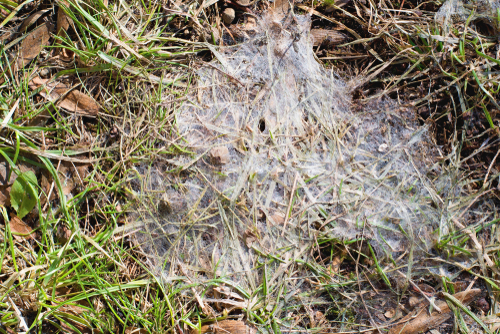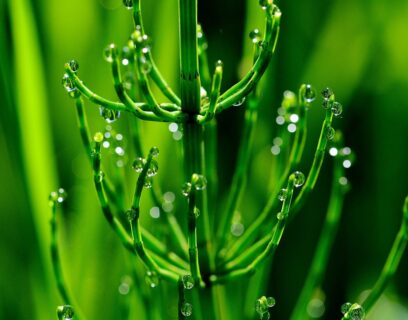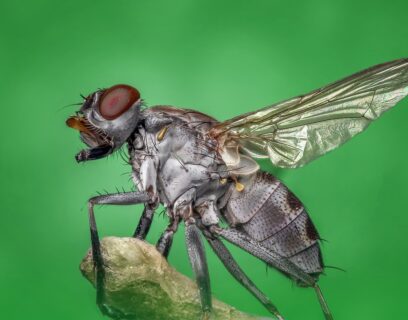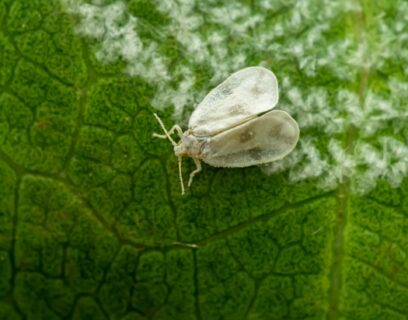Log in or create new account to save this product to your wishlist.
How to identify, fight, and prevent lawn diseases
Lawn diseases can be tricky to identify. Check out our expert's guide to preventing and eradicating fungal lawn disease.
Latest articles
7 MIN 22 Jul How to keep your lawn in shape this summer 9 MIN 15 Jul Watering Your Garden: 10 Top Tips! 11 MIN 15 Jul Is Your Grass Type Right for your Garden? 11 MIN 10 Sep Create Your Low-Maintenance Garden – Tips and Ideas 11 MIN 08 Sep The Ultimate Guide to Choosing the Perfect Hedges for Your Garden 12 MIN 30 Aug The Top 20 Evergreen Climbers to Transform Your GardenAre you doing everything you can to beautify your lawn but not quite seeing optimal results? Perhaps you’re scarifying, fertilising, aerating, and watering, but your lawn still looks lacklustre and patchy. Could there be an undiagnosed lawn disease preventing your turf from looking its best?
- Lawn disease: an overview
- How do I identify a lawn disease?
- Can I treat my lawn with a fungicide?
- How do I repair a diseased lawn?
- Snow mould “Microdochium nivale” / Fusarium & Snow Mould lawn disease
- Red thread / pink patch lawn disease
- Fairy rings lawn disease
- Powdery/downy mildew
- Dollar spot disease
- Rust lawn disease
- Pythium lawn disease
- Could the disease actually be a pest infestation?
- Your lawn patches could be a nutrient deficiency
- FAQ
Lawn diseases have a significant impact on your grass plants, affecting your turf’s general aesthetic and vitality. Infections can occur at any time of the year but are most likely to appear during warm and wet periods. However, lawn diseases can take hold at any time of the year.
In this article, we explore how lawn diseases affect your lawn. We’ll help you identify lawn diseases and their causes – and, most importantly, how to prevent them and to stamp them out so that you can enjoy a beautiful turf all year round.
Ready? Let’s go!
Lawn disease: an overview
Lawn diseases tend to attack your grass plant’s root structure, causing visible deterioration of the leaf and impacting the turf’s density. There is a range of lawn diseases in the UK, but the most commonly found are:
- Snow Mould
- Red Thread
- Fairy Rings
- Powdery mildew
- Dollar spot
- Rust disease
- Pythiu
We’re going to explore these and other lawn diseases, but first of all, it’s essential to identify the problem so that you can arm yourself with the best possible defence.
How do I identify a lawn disease?
Most lawn diseases are fungal infections that stunt your turf’s growth. Many of the symptoms are similar, making it challenging to identify the source of the problem correctly. If the symptoms are severe, you might consider hiring a professional, as they’ll be able to identify and attack the specific problem.
However, it’s possible to identify each disease yourself – just keep reading! This article could save you £££s!
Can I treat my lawn with a fungicide?
Some lawn diseases are difficult to shift, but you can control the damage with a range of fungicides – depending on the initial problem.
In general, it’s better to try and create an environment that prevents fungal infections from taking hold in the first place. Make sure there’s:
- Sufficient light – direct access to sunlight helps minimise excessive moisture from the soil surface, helping prevent fungal growth
- Good airflow – mow your lawn regularly to help improve the airflow over the soil surface, preventing soggy soil
- Minimal thatch – thatch is the organic matter that collects over the soil surface. The more thatch around your grass plants, the more likely fungal infections will occur.
- Minimal compaction – hard earth around the roots of your grass plants stunts the leaf’s growth, providing more space for fungal infections to develop
How do I repair a diseased lawn?
Firstly, it’s essential to recognise that fungus, in itself, doesn’t cause disease. Most turf diseases occur due to an imbalance in the natural fungi population that’s present in all garden turf.
Fungi can, in fact, help fight the organic thatch layer that develops over the soil surface – especially after winter. So fungi can be beneficial, but the imbalances occur when the weather is conducive to disease.
It’s also worth noting that stressed grass plants are more susceptible to lawn disease than healthy ones, so keeping your lawn well mown, fed, and aerated is the best defence against lawn disease.
However, your lawn is particularly susceptive to fungi-based lawn disease in the spring when the weather is warm and humid. Rain, in particular, can help spread the fungal spores.
So, depending on the nature of the lawn disease, you can treat your turf by scarifying, aerating, and overseeding. Read on for details of individual diseases to identify whether you can treat the disease this way or need a specific fungicidal treatment.
Lawn doctor Louis says:
If your lawn is susceptible to flooding, it needs drainage by aerating, which will help avoid fungal infections.
Snow mould “Microdochium nivale” / Fusarium & Snow Mould lawn disease

Symptoms: White fluffy patches throughout the lawn, resembling a thin layer of snow (hence the name!). You’ll first notice patches of just a few centimetres in diameter, but eventually, they spread to around 30cm in size. The lawn above ground appears to die off.
Causes: Too much nitrogen often causes snow mould, which is usually a sign of over-fertilisation from the previous autumn. Alternatively, snow mould occurs in poorly drained soil due to waterlogged turf.
Occurrence: In cool, damp weather – especially in the winter.
Lawn Disease Treatment: Prevention is the best treatment here, so loosen the soil surface by scarifying and aerating.
Red thread / pink patch lawn disease

Symptoms: Reddish/pinkish spots of various shapes, resulting in root death. If you look closely, you can spot the fungi within the blades of grass.
Causes: A lack of nitrogen, muggy/humid weather.
Occurrence: Appears frequently in ornamental lawns but can also occur in heavy-use sports lawns. Usually triggered in temperatures from 5-30ºC.
Lawn Disease Treatment: Apply a nitrogen-rich fertiliser and ensure the soil doesn’t dry out. Turn your sprinkler on in the morning so that the grass blades can dry out during the afternoon. You’ll be able to rake out the dead fungal remnants within a few days.
Fairy rings lawn disease

Symptoms: Brown or dark green circles from 4.5m-9m in diameter. The fungus creates a waterproof (or hydrophobic) layer on the soil surface, resulting in starved roots, producing brown, dead grass rings. Alternatively, the nitrogen released when the fungi consume and decompose organic matter causes dark green circles.
There are three classifications of fairy ring lawn disease:
- Type 1: Dead, brown, wilted grass rings
- Type 2: Dark green rings
- Type 3: Mushroom/toadstool rings
Causes: Drought conditions or mowing too short usually induces Types 1 and 2, while humid or soggy conditions often result in Type 3.
Occurrence: Most notably between spring and autumn
Lawn Disease Treatment: In all cases, dethatch your lawn and aerate. Remove nearby tree stumps or roots as these provide fungal stimulation. After dethatching, topdress the soil with a fine layer of high-quality lawn sand. For dark green rings, use a high-nitrogen fertiliser to mask the circles. For brown rings, aerate the soil, then drench the lawn with a wetting agent (a chemical to help the water spread and penetrate).
Powdery/downy mildew

Symptoms: You’ll see powdery mildew at the top of your grass blades and downy mildew on the leaves at the soil surface. Mildew appears as white/grey fluff – if you look closely, you’ll see black dots within the fluff. Eventually, the grass will dehydrate and die.
Causes: Mildew occurs as a result of high humidity.
Occurrence: Spring and summer in high humidity. It most frequently appears on shaded parts of your lawn.
Lawn Disease Treatment: You could simply wait until the temperature drops, which deactivates the fungus. If you want to fight it manually, dust the grass with a sulphur-based fungicide.
Dollar spot disease

Symptoms: Brown-coloured coin-sized spots, presenting as light brown circles, surrounded by a dark brown, almost red border.
Causes: Dollar spot thrives in alternating humid, then warm weather (with cool nights). Fescue grasses are particularly susceptible.
Occurrence: Late spring and late autumn.
Lawn Disease Treatment: Feed your lawn with a high-nitrogen fertiliser or spread lime. If the fungus is stubborn, use an organic fungicide.
Rust lawn disease

What is it?: A slow-acting fungus that results in yellow or orange traces on the grass blade. Rust sits on the blade and is easily brushed off, which can help spread the infection. There are three principal types of rust disease:
Crown rust:
A yellow/brown withering at the tips of the grass blades. Starts as tiny yellow spots and spreads across the tips of the leaf. Results in dusty spore deposits that look a little like pustules.
Brown stain rust:
Brown dots that spread across the entire leaf.
Orange stripe rust:
Noticeably stark yellow/orange fungus that affects the entire leaf of the grass plant in a stripe. It quickly spreads across the whole lawn.
Causes: Rust lawn diseases are often caused by poorly nourished soil and over-cutting of the leaves. The spores are easily transmitted by foot traffic from animals and humans and could be spread with standard gardening tools.
Occurrence: Potentially year-round, but increased risk during a warm, wet summer, followed by a warm autumn.
Lawn Disease Treatment: The best treatment is prevention, so avoid rust by ensuring your lawn remains in good condition. Provide the correct amount of fertiliser, and use a high-potassium fertiliser in the autumn to strengthen your turf over the winter. Use a high-nitrogen fertiliser in the spring to give the turf a growth burst and mow (but don’t mulch!). Remove the clippings after cutting.
Pythium lawn disease
Symptoms: Also known as Root Rot, pythium appears as sunken, brownish areas on your lawn, with a slimy film along the stalks of the blades.
Causes: Drought stress, waterlogging, high soil pH.
Occurrence: Mainly in the summer or autumn, when it’s hot and soggy.
Lawn Disease Treatment: Aerate the soil to loosen it and remove the thatch layer with a rake or scarifier – this improves your soil’s drainage. When watering your lawn, sprinkle in the morning to allow the turf to dry during the afternoon. Avoid watering in the evening, as night moisture encourages further spread.
Could the disease actually be a pest infestation?
Many lawn diseases present in a similar way to pest infestations. For example, dollar spot looks similar to a chafer grub infestation. Read more about chafer grubs and eradicating them from your lawn soil.
Alternatively, dollar spot could be a leatherjacket infestation. Find out more about leatherjackets here.
Your lawn patches could be a nutrient deficiency
Alternatively, the yellow patches in your turf could result from a nutrient deficiency. Check out our expert article on treating yellow patches on your lawn.
Ultimately, the best way to prevent fungal lawn diseases is to maintain your soil, providing enough nutrients to support your lawn’s optimal growth. There’s an NPK fertiliser for every season, so make sure you use the correct fertiliser to help your lawn flourish throughout the year.
Carrying out a soil test helps ascertain the acidity of your soil – too acid, and your grass plants will suffer (and weeds will thrive). Adding garden lime to your soil helps neutralise acidity – read our article to find out how to beautify your lawn with garden lime.
Ready to treat your lawn disease? Or do you have more questions?
We hope you’ve got all the information you need to make an informed decision about how to identify, fight, and prevent lawn diseases that could be affected your lawn. But if you have any further questions, please don’t hesitate to get in touch.
We love to hear from you, so send us an email, and we’ll get back to you as soon as possible.
Thanks for reading!
FAQ
Look for signs of yellow, brown, or orange patches. Take a close look at the damaged spots on your lawn – if you can see tiny threads or fungal mycelium between the stalks, it’s a sure sign of fungal lawn disease.
In the UK, the most common grass diseases are usually caused by a fungal infection. You’ll see little orange or brown spots on the grass blades, or the grass leaf itself may appear to be dying. Fungal infections often occur in circles across the lawn, or they can spread across the entire turf. Alternatively, pests such as chafer grubs or leatherjackets could cause yellow patches on your turf.
If you look closely, you’ll see tiny threads that appear to be grass blades, but they’re usually brown or orange. These are tiny fungal threads and require prompt treatment to prevent them from spreading across your turf.
Leave a comment
Your answer will be displayed on the site and the interested party will be notified by email.
Leave a comment
Have a question or want to share your experience? Leave us a comment.
Read more
The best tips and tricks for a lush green lawn
 Scarifying Kit
All products after scarifying | Quickly restores the lawn after scarifying | Outsmart weeds quickly with the use of this kit
From: € 39.99
Scarifying Kit
All products after scarifying | Quickly restores the lawn after scarifying | Outsmart weeds quickly with the use of this kit
From: € 39.99
 Spring Lawn Care Kit
MOOWY’s choice for the spring | Quick recovery of your lawn after winter | A strong lawn prevents weeds
From: € 25.99
Spring Lawn Care Kit
MOOWY’s choice for the spring | Quick recovery of your lawn after winter | A strong lawn prevents weeds
From: € 25.99
 Long Lasting Lawn Fertiliser
Effective for 90 days | See results in 14 days! | Suitable for all types of grass and soil
From: € 13.99
Long Lasting Lawn Fertiliser
Effective for 90 days | See results in 14 days! | Suitable for all types of grass and soil
From: € 13.99
Do you want a lawn calendar?
🌱 All important maintenance moments for your lawn during the year. Leave your email and we will send you the lawn calendar for free.
Enter your email
Receive the lawn calendar in the mail
Enjoy a green lawn all year round!













Comments (0)
There are no comments yet. Well then, what are you waiting for to
Be the first to write your comment!inaugurate this pretty page?
Do you have some comments?